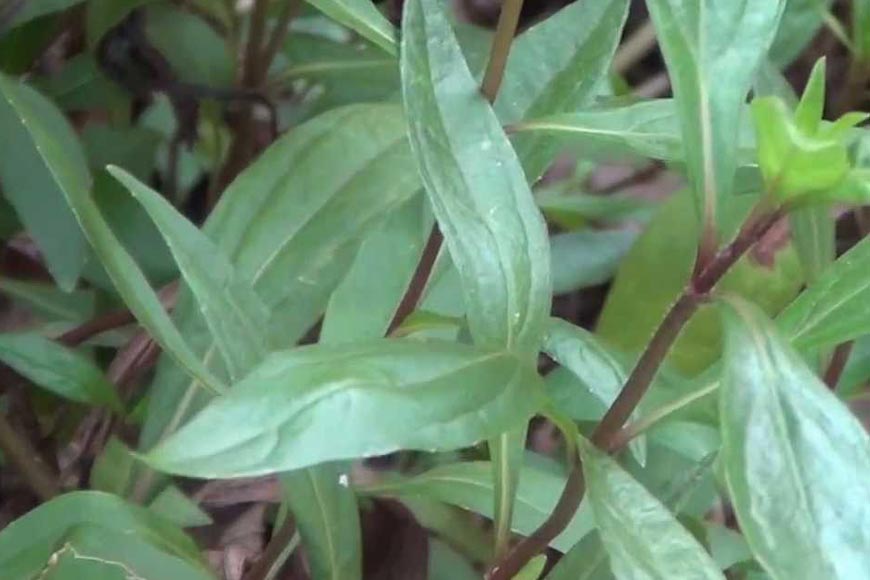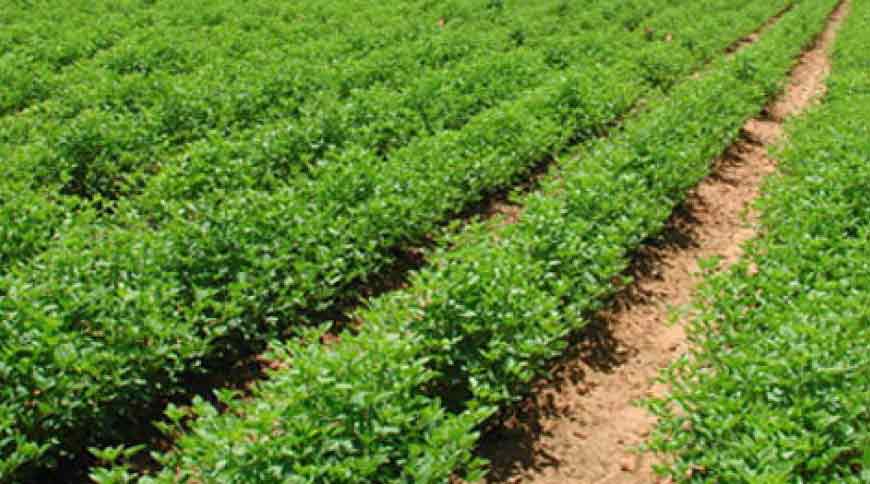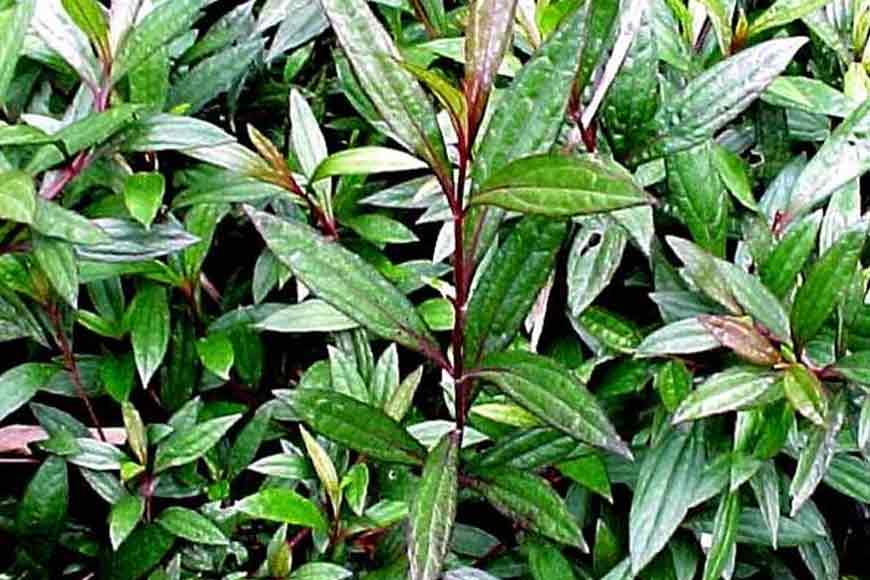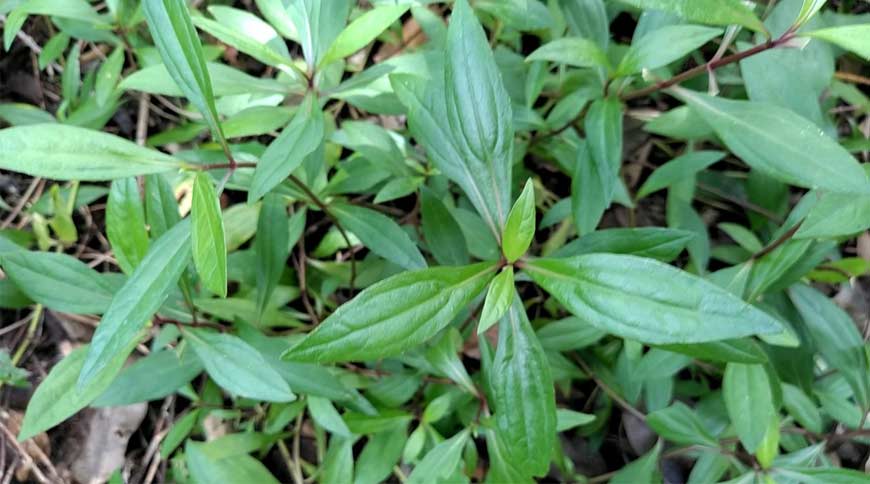Medicinal Ayapana Herb Cultivation by Malda farmers brings loads of revenue

The district of Malda is traditionally known for its mangoes which have an international reach. But now the farmers of Habibpur block have introduced a new medicinal herb cultivation that has shown great promise as a cash crop. Recently, Malda District Magistrate visited Habibpur to inspect the Ayapana cultivation and was impressed by how the farmers have turned the fields conducive for this medicinal herb.
Ayapana or Water hemp also known as tall water hemp or common water hemp, is a herbaceous annual plant that belongs to the Amaranthaceae family. It is predominantly found in regions with moist or aquatic environments, such as wetlands, riverbanks, and agricultural fields. Traditionally old alluvial soil is found in Malda that is clayey in texture, acidic, rich in potash and phosphorus, and has a moderate amount of nitrogen and humus. Water hemp is a highly adaptable weed that can grow in a variety of soil types. However, it tends to thrive in fertile soils that are well-drained and rich in organic matter. It prefers loamy or sandy soils with a slightly acidic to neutral pH range (around 6 to 7). Additionally, water hemp can tolerate both wet and dry conditions, making it a resilient plant in various soil environments.

Water hemp plants are known for their rapid growth and can reach heights of 3 to 10 feet (0.9 to 3 meters) under favourable conditions. They have a slender, erect stem that is often reddish in colour and bears multiple branches. The stem is smooth and may have a slight glaucous appearance. The leaves of water hemp are simple and alternate along the stem. They are lance-shaped and can range in colour from green to reddish-purple. The leaf margins are usually smooth, but occasionally they may have fine teeth.
One characteristic feature of water hemp is its ability to produce separate male and female flowers on the same plant, a trait known as monoecious. The flowers are small and inconspicuous, typically greenish in colour. Water hemp blooms from mid-summer to early fall, and the capsules contain numerous small, round black, or brown seeds.
But then again water hemp can also be detrimental to traditional crops and can destroy them, here's how the farmers are converting the lands keeping the original crops secure. “Efficient management of water hemp requires integrated weed management practices. Crop rotation, which involves alternating different crops in a field over time, can disrupt the weed's life cycle and reduce its impact. Tillage, or mechanical soil cultivation, can help control water hemp by uprooting and burying the weed seeds. However, excessive tillage may lead to soil erosion and other environmental concerns. So there needs to be check and balance in the cultivation of this weed for commercial purposes and I hope the Malda farmers are doing great considering the medicinal properties of this weed that far outweighs its bad impacts,” said agricultural scientist Bibhuti De. True, the understanding and management of this weed contribute to maintaining the health and productivity of ecosystems and cultivated fields.

According to the West Bengal State Medicinal Plants Board, Malda has favourable conditions for the plantation of Ayapana leaves. Other medicinal plants such as Ekangi, Bhringaraj, Neem and Anantamul are also cultivated in Malda. The West Bengal State Medicinal Plants Board (WBSMPB) was set up in the year 2002 to look into such prospects.
Due to the positive results of the cultivation of medicinal plants, many farmers of Malda are shifting from crop cultivation to medicinal herb cultivation. Especially the Ayapana leaves, which ensure the farmers' good revenues from their agricultural yield, are willingly being cultivated by the farmers. By cultivating medicinal herbs, farmers can diversify their income sources and reduce their dependence on traditional crops. This diversification strategy can help mitigate risks associated with factors such as market fluctuations and climate change.

In the future Ayapana leaves will be cultivated not only in Habibpur, but across a wide block of the district. According to officials, due to the lack of knowledge about Ayapana and its qualities and benefits, most people overlook it. The leaves of Ayapana are soft like bay leaves and the veins are dark red. In the absence of fresh leaves, dry plants can be crushed and used. Ayapana leaves are haemostatic, blood-enhancing, blood-purifying, and a stimulant of the nervous system. If bleeding does not stop after a deep cut, Ayapana leaves are crushed and applied to the wound and tied tightly, it helps stop the bleeding in a short time. Ayapana leaves can be boiled in water and wash rotten or infected sores with it which helps in healing the sores quickly. It is thus a great milestone among the farming community of Malda who are showing a new horizon in cultivation and revenue generation.











